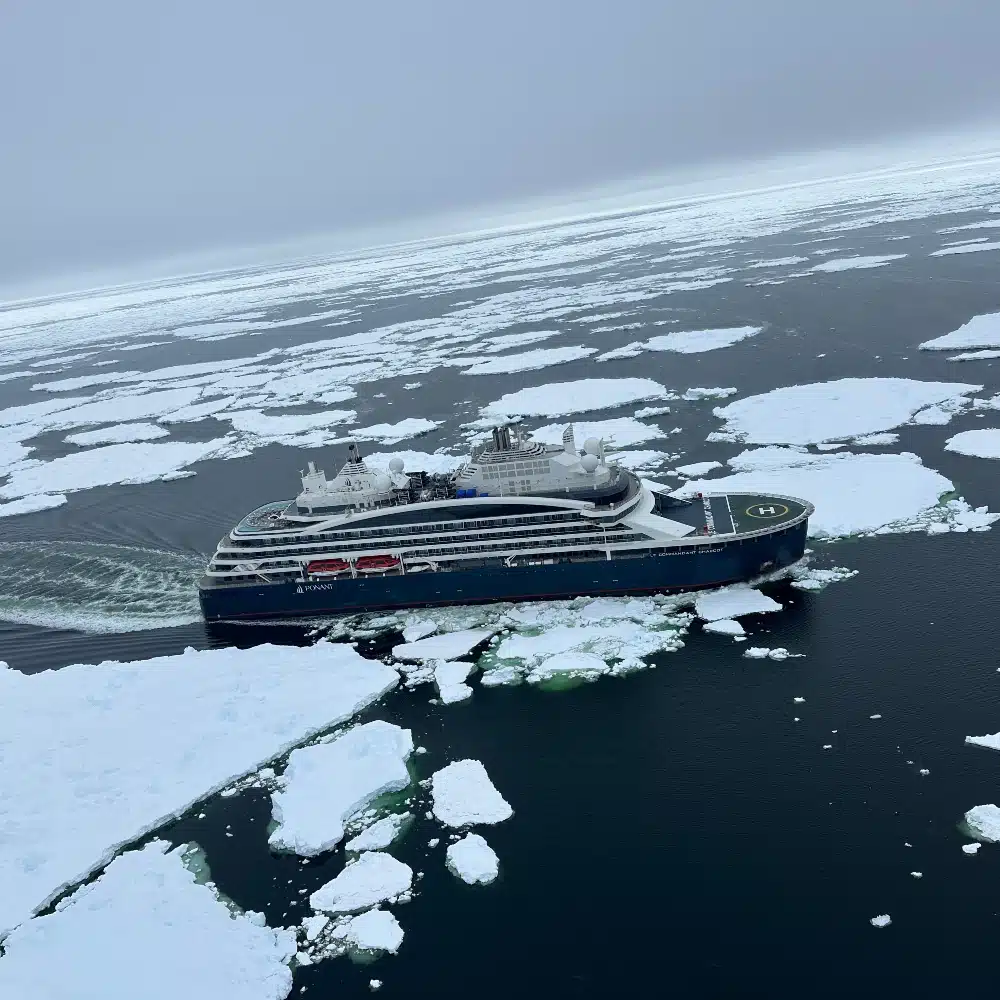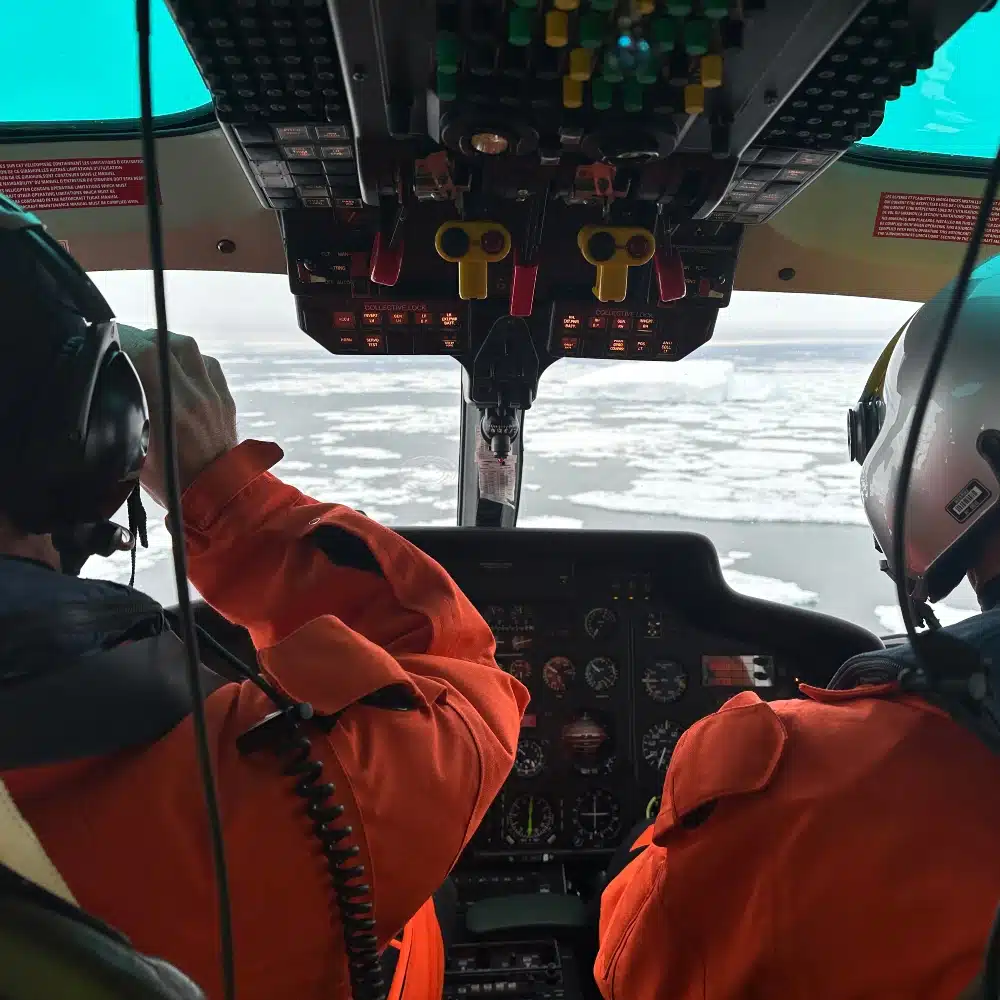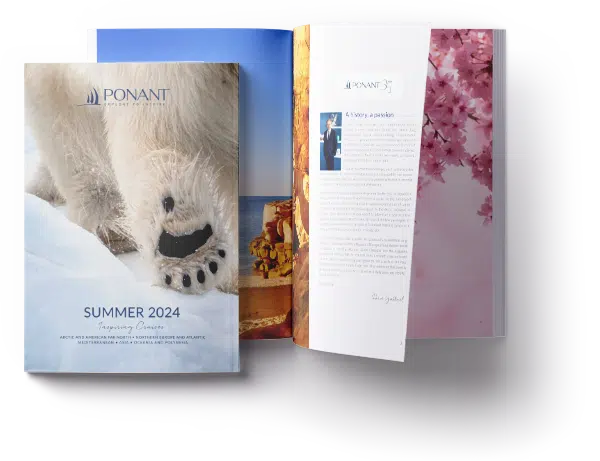In 2024, members of the prestigious Explorers Club will join PONANT expeditions to the farthest corners of the earth. In January, Dr. Ulyana Horodyskyj Peña – renowned glaciologist and recipient of several science grants – shares her insights with guests on board Le Commandant Charcot during a cruise into the great white wilderness of Antarctica.
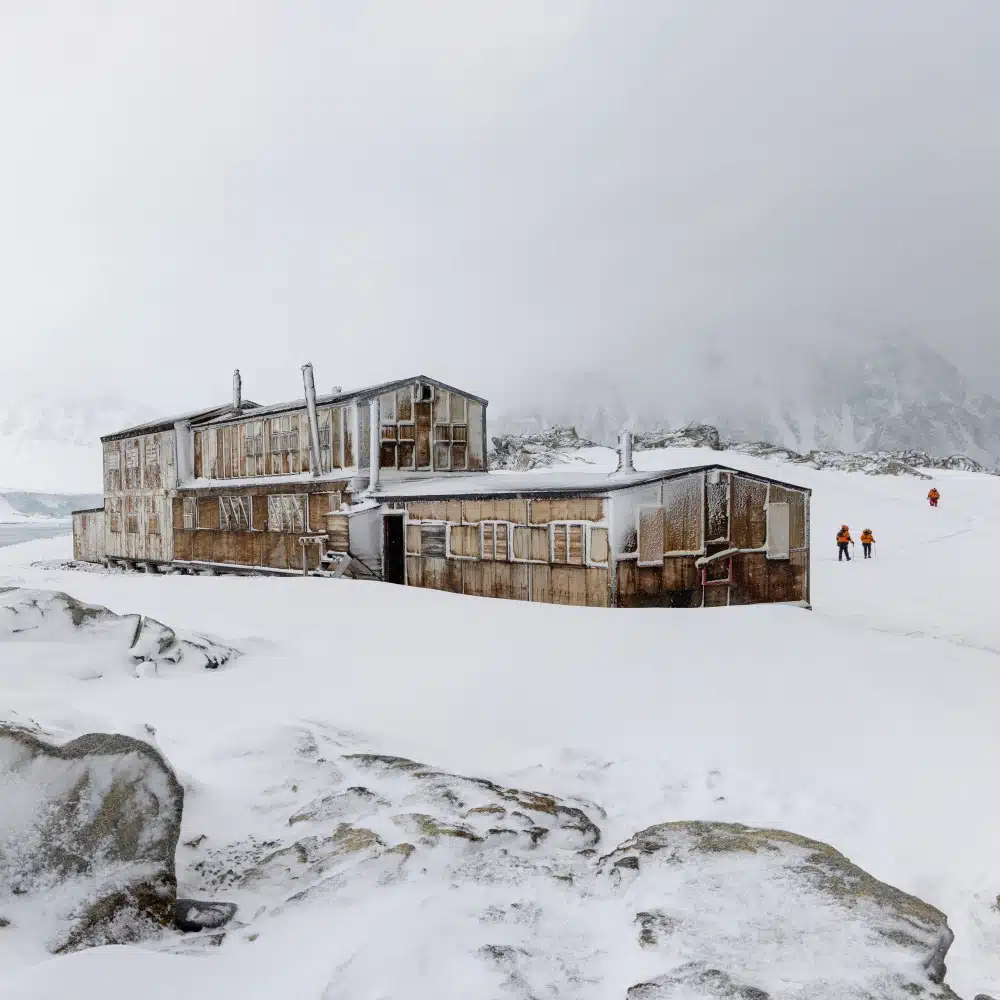
When Dr. Ulyana Horodyskyj Peña was a child, she searched for inspiration in the canopy of stars high above her Rochester, New York, neighborhood. She was obsessed with astronomy. Her father, an engineer, encouraged her with a subscription to Secrets of the Universe, a weekly mailing for kids.
Then, when she was six, the family went on a European vacation. “I have a photo of me holding up a piece of ice in the Swiss Alps,” she recalls. “For some reason, that ice made an imprint on me.” And she found her true inspiration – not in the sky overhead, but in the earth underfoot.
Today, this Ukrainian-American holds a Ph.D. in geological sciences. And the ice still commands her attention as she specializes in glaciology. With National Science Foundation and National Geographic grants on her CV, with every continent on her resume by the time she was 23 years old, and with her national fellowship in The Explorers Club, she is one of the most accomplished scientists in her field.
We caught up with Dr. Horodyskyj Peña at the University of Colorado Climate Adaptation Center in Boulder, where she is the head of science communication. Our conversation was wide-ranging, in depth, and full of hope for turning the tide on climate change.
Who inspired you to do the work you do?
My Dad and Mom, for sure. And I had a high school mentor when we lived in Cleveland, Dr. Robert Forward, who believed in me and encouraged me to compete in the national science fair. I actually started presenting at science fairs when I was ten, but he inspired me to go to the next level. I like to think that I’m “paying it Forward” in his honor with the work that I do.
Were you always a geologist in the making?
Not really. I majored in astronomy at Rice University in Houston, then remembered that trip to the Swiss Alps with my family and I thought, “Hey, I’m gonna check out this geology class.” And that changed everything. The professor took us out in the field. As research assistants, we did a lot of the support work for the geologists on our ship. I fell in love with working in extreme environments.
At Brown University, I married my love of the stars and the earth and studied planetary geology, and became fascinated by volcanoes. After focusing my Geological Sciences master’s degree on Iceland, I spent time at the Center for the Study of Active Volcanoes, then everything went full circle, and I turned all my attention to glaciers. That led me to my Ph.D. from the University of Colorado Boulder, where I now teach.
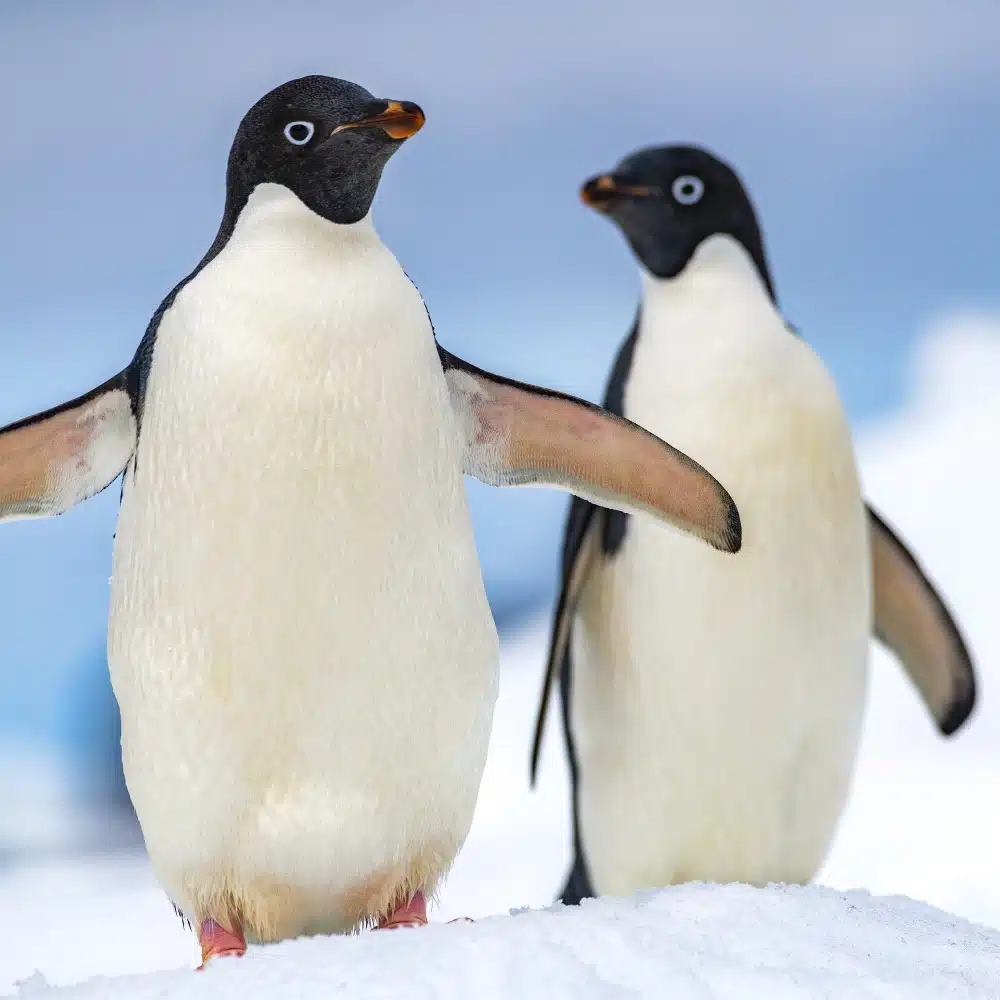
How did that lead you to The Explorers Club?
Well, they actually found me. When I was 25, I led my first Himalayan expedition. We climbed to 15,000 feet and used time-lapse cameras to catch the depth of glacial lakes in real-time. One was the size of 40,000 Olympic-sized swimming pools! By observing how much water the lakes were losing as they drain and refill over time, we could come to understand how climate change was affecting the glaciers.
The BBC picked up the story. Then in 2012, some Explorers Club members contacted me. I gave a talk about my work at their offices, which led them to give me a grant for my work. I’ve been a national fellow since 2017.
How has the focus of your work evolved since then?
One of my projects is looking at the impacts of pollutants on glaciers and other ice fields like the ones in Antarctica. These particulates – called black carbon – come from the incomplete combustion of fuel. They might come from forest fires or processing plants or any kind of manufacturing that releases pollutants into the air. We always hear about the harmful smoke that rises into the atmosphere, but we don’t hear about where the actual bits of carbon land.
Well, in many cases, air currents deliver them high into snow-covered mountains, or to the poles. They settle onto the ice, where their dark color absorbs heat from the sun. This helps to explain why glaciers and ice are melting. And as we’ve seen with recent forest fires, the health of the ice isn’t the only thing that’s at risk. Human health is also an issue.
You’ll be sailing into Antarctica on board Le Commandant Charcot in January. What do you hope to find?
I want to enlist PONANT guests to collect samples while they are out on excursion so we can get an accurate measure of what we’re dealing with. I’ll have photos from other parts of the world to share with everyone so they can see the dangers for themselves. These sorts of real-time experiences bring the climate crisis home to people. I hope they feel inspired to get the word out, call their representatives to urge them to support policy, and at most vote into office the people who support legislation that protects the planet.
Mostly, I want to show PONANT guests that this is a solvable problem – and the solution is scalable. We know that carbon stays in the atmosphere for between ten and fourteen days. We have all the tools we need to turn things around.
I didn’t want to get on my soapbox there! But my point is that the data I collect can be transformed into policies and regulations that can reverse our course.
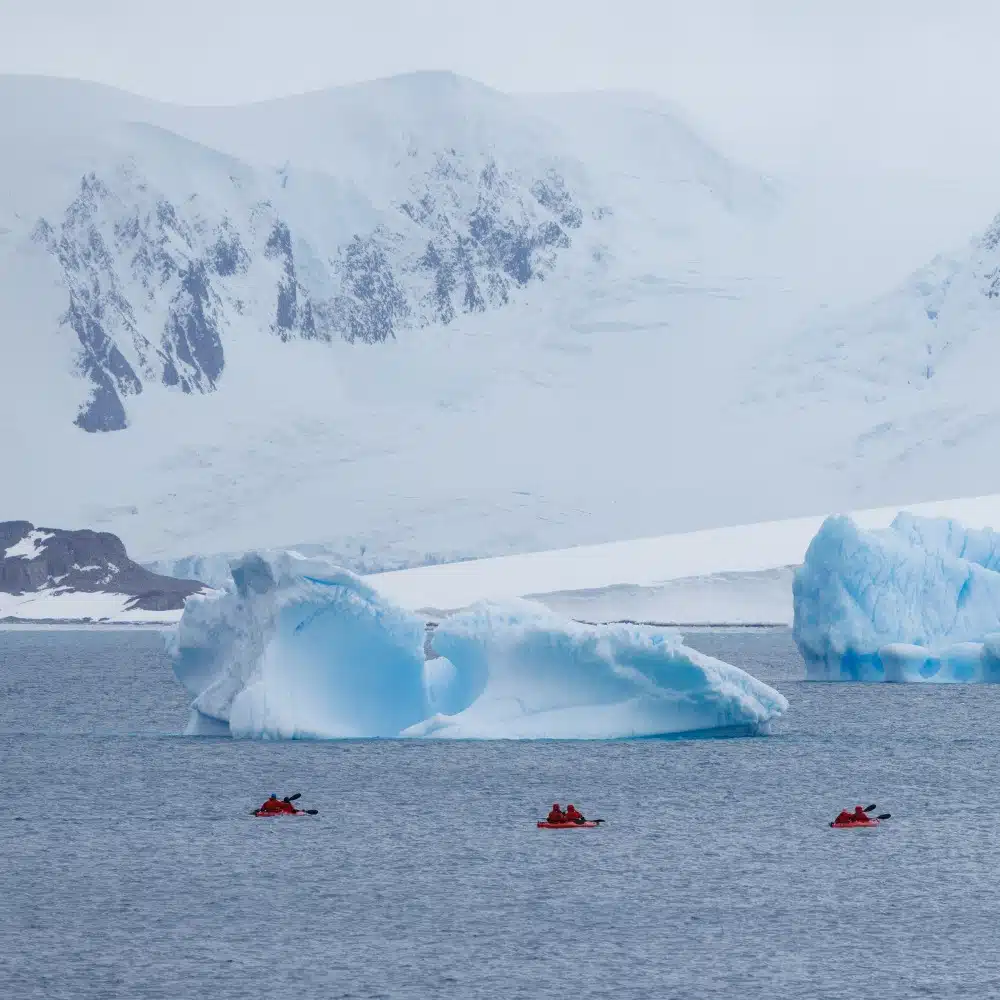
Sounds like you’re hopeful?
“Hope and action” is my mantra. You can’t have action without hope. That’s why I’m so excited to spend time with PONANT guests. They have that spirit of adventure and curiosity that makes it easy to introduce science into the conversation. I want to show them in real-time what science looks like in the field. What does raw data look like? What are the uncertainties? How do we keep our samples clean?
I want them to be ambassadors for science. In a world riddled with misinformation, science needs all of us.
And what’s really beautiful is that they already get it! I know this because they are choosing to travel sustainably on a ship that was built to protect the environment.
What else are you working on?
Between teaching climate change and renewable energy at the University of Colorado Boulder, I write a weekly blog called Science Wednesdays. It fulfills my mission to bring people to the science and science to the people.
My husband Ricardo and I also run our Summits, Songs & Science project. We want to make science accessible through different means such as mountaineering, music, and critical thinking.
So, all in all, it sounds like you’re truly honoring your high school mentor Dr. Robert Forward. You’re really “paying it Forward!”
Yeah, I think we all need to feel inspired, no matter where we are in our lives or how old we are. And if I can inspire someone to do a small part in raising awareness of how scientists arrive at their conclusions about the climate, I’m doing my job.

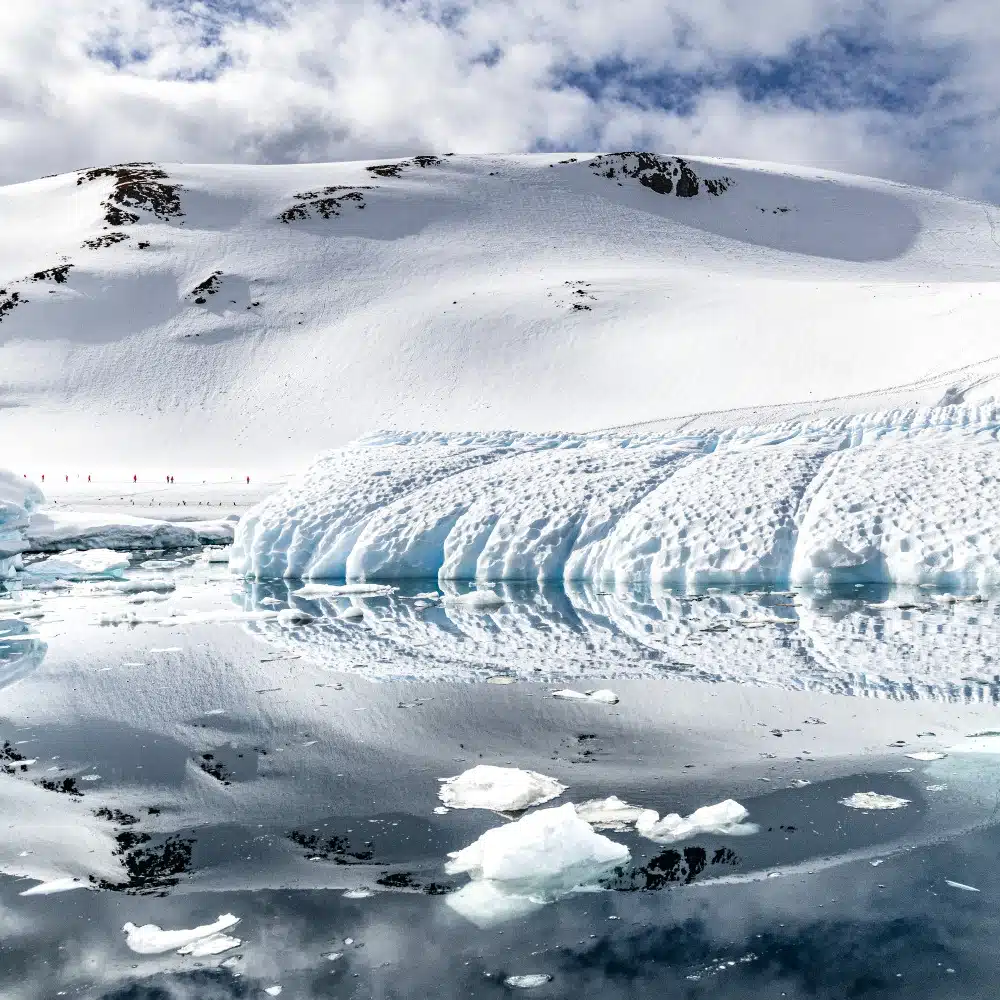
Discover the World with PONANT + The Explorers Club
See where PONANT + The Explorers Club is going next. Join us in 2024, 2025, or 2026 for voyages designed to dive deeper discovery and scientific enrichment.



